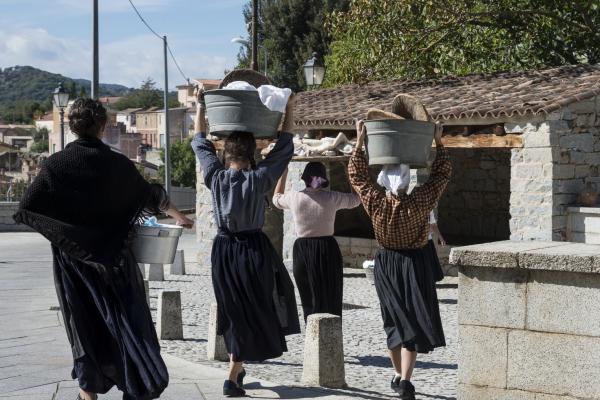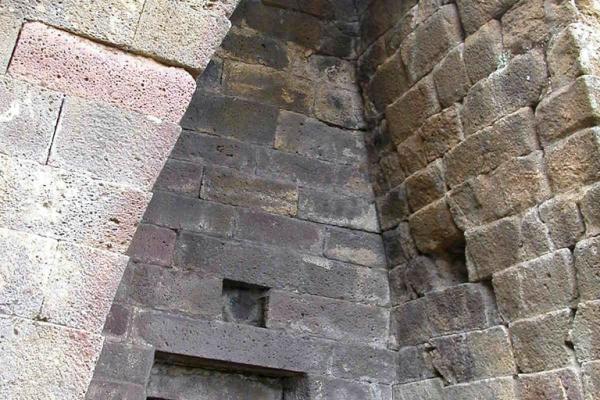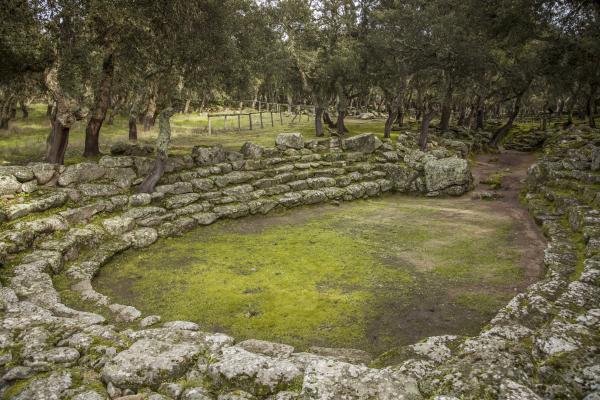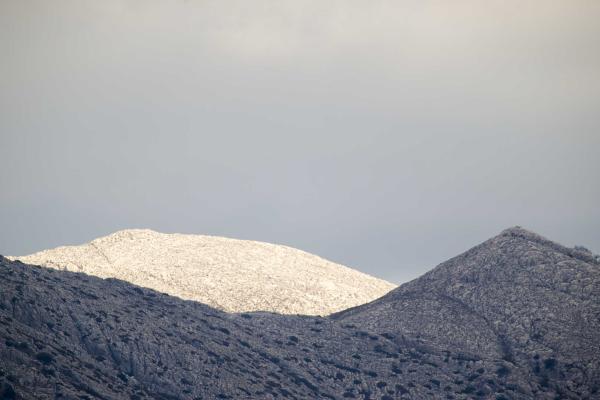It was the Parish Church of Onanì and the centre that the ancient village revolved around. Today, however, it stands on a hill on the western outskirts of the town – on the road to Bitti -, and continues to be its symbol, as well as representing a symbol of Romanesque style in the Nuoro area. The Church of San Pietro Apostolo is a building constructed almost entirely from small granite ashlars, while its external cladding is made from schist slabs. It dates back to the second half of the 12th century and is an example of ‘minor’ Romanesque architecture, characterised by a single nave, with an apse facing south-east. On the façade, you will notice the portal with a raised relieving arch and, on the same axis, a cross-shaped opening. Up above, at the top of the slopes, stands a bell gable. The cross-shaped window is repeated on the back, just above the roof of the apse, where another single-lancet window appears. The interior is no less surprising: the dome of the apse and the barrel vault are, in fact, decorated with frescoes and, particularly on the ceiling of the church hall, you can admire the sacred scene of Saint Peter receiving the keys to Heaven.

Church
A ‘jewel’ made of granite and schist, shrouded in dark legends stands next to a nuraghe on the edge of a village 30 kilometres from Nuoro, in central-northern Sardinia
A ‘jewel’ made of granite and schist, shrouded in dark legends stands next to a nuraghe on the edge of a village 30 kilometres from Nuoro, in central-northern Sardinia
See this place because...
You will be enchanted by the decorations and its harmonious dominance of the country landscape, on the edge of a village rich in evidence of the past and deep-rooted traditions
Nearby
Come arrivare
Lungo la SP 3 da Bitti a Lula, al km 7,5 si trova l'abitato di Onanì, alla cui periferia sorge la chiesa di San Pietro. Il contesto ambientale Collocato nel cuore della Sardegna, l'abitato di Onanì è conosciuto per i murales realizzati dal pittore Diego Asproni e da un gruppo di studenti dell'Accademia di Brera. Nelle vicinanze si trovano siti archeologici che risalgono all'epoca nuragica. L'antica parrocchiale di San Pietro Apostolo è ubicata all'immediata periferia del paese, in un'area campestre che prospetta sulla strada fra Onanì e Bitti.
Ti piace questo luogo? Nuoro potrebbe essere la tua meta ideale.
You may also like
More attractions in the vicinity
Nearby hotels and accommodations

Bed and breakfast (rental rooms)
ONANÌ
0 km

Bed and breakfast (rental rooms)
ONANÌ
0 km

Bed and breakfast
BITTI
4 km











